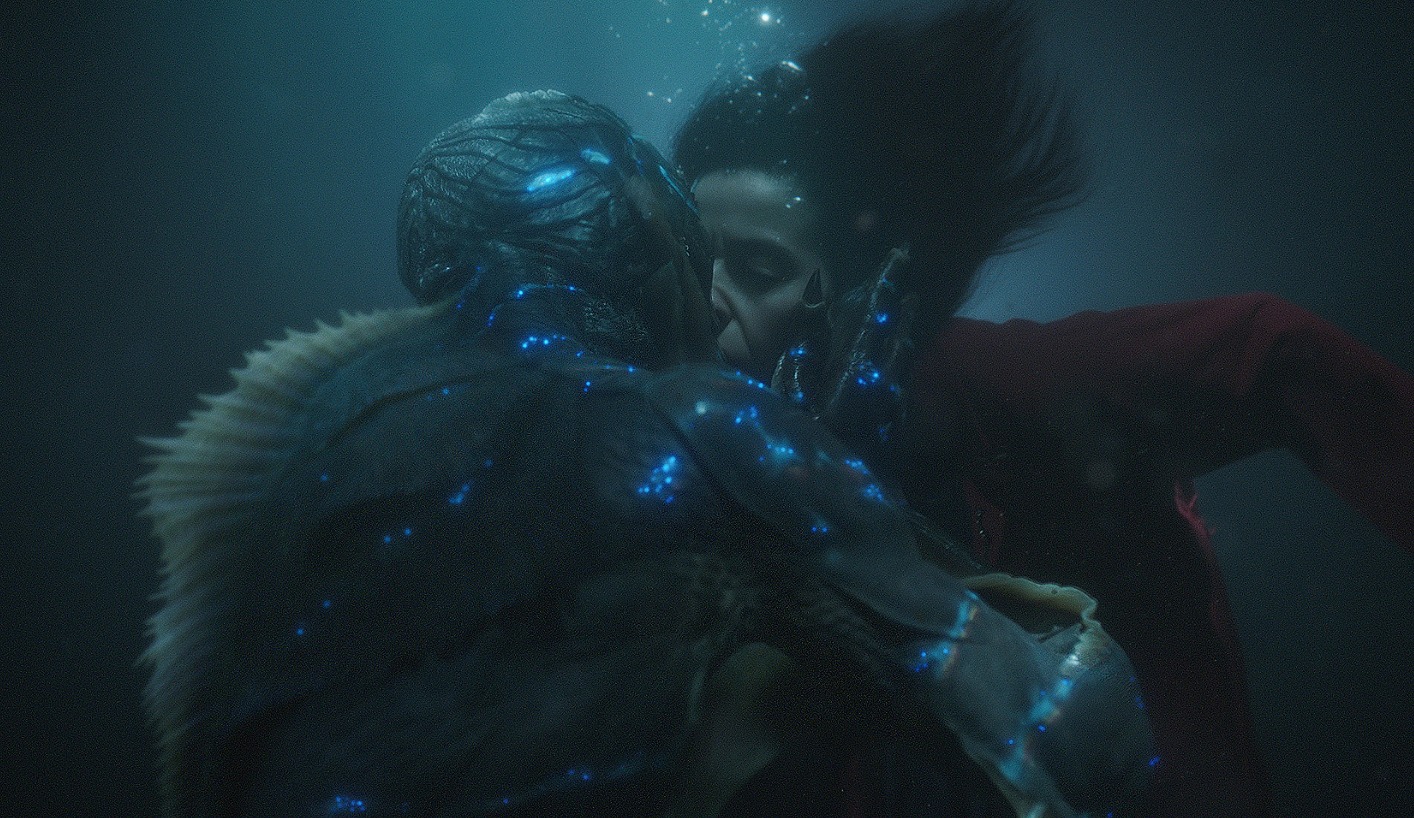I wouldn’t describe myself as head-over-heels in love with Guillermo del Toro‘s The Shape of Water (Fox Searchlight, 12.8) but I certainly approve and then some.
A sweet Guillermo fable through and through, I agree 100% that it’s definitely his best film since Pan’s Labyrinth — one of his smaller-scale creations that aims above and beyond the fanboy realm. Shape is a sci-fi period thing, a trans-species love story, a swoony romantic fantasy and an E.T.-like tale about a merging of disparate hearts and souls.
It also accommodates a darkly paranoid story about the forces of absolute badness looking to dissect and destroy an exotic life form. It’s a little stiff and overbearing at times, but generally mature and tender-hearted and ten times better than Okja, which used a similar storyline.

Sally Hawkins in Guillermo del Toro’s The Shape of Water.
This is an adult fantasy piece full of heartache and swoony feelings, lusciously and exactingly composed, painted with early ’60s period detail and production design to die for. A movie completely dominated and in fact saturated with its Guillermo-ness.
I saw Shape late last night. The screening began at 11:20 pm and ended two hours later, and I was 100% alert and wide-eyed start to finish. This is what good movies do — they wake you up and keep you in a state of anticipation until the closing credits. Oh, and the headline I went with three days ago after the first Venice showing — Douglas Sirk’s Creature From The Love Lagoon — still stands.
Set in 1962 Baltimore, The Shape of Water is about a current that quickly develops between Elisa (Sally Hawkins), a mute and lonely but sensually attuned dreamer who works as a cleaning woman inside a government-run scientific laboratory, and a gentle, large-eyed aqua-creature with God-like healing powers (Doug Jones) who’s recently been captured in South America and brought to the lab for study and eventual dissection.
There are serious obstructions to their love affair, of course, but you knew that going in.
Elisa is a perfect romantic match for this curious, open-hearted creature — a woman who lives in her heart and dreams, cavorting in romantic tunes and old-Hollywood musicals, and who responds to being seen and accepted for who she is deep down, rather than her low-level job or her inability to speak or her average looks.
Hawkins, trust me, is a guaranteed Best Actress contender as of right now.
The Shape of Water works according to its own emotional conditions and terms, and is certainly a welcome return to the kind of smaller, emotionally poised Guillermo film — intimate, modestly scaled — that was last repped by Pan’s Labyrinth, and before that The Devil’s Backbone and Chronos (and which was also manifested in Juan Antonio Bayona‘s The Orphanage, which GDT produced).
Alas, Shape isn’t perfect. It’s a full emotional meal but saddled, I regret to say, with an implausible story, even by the measure of a fairy tale. It contains unlikely occurences, curious motives and logical roadblocks, all of which have to be elbowed aside by the viewer in order to stay within the flow of it. Which — don’t get me wrong — I was totally willing to do because I so loved the overall.
Sally’s supervisor is a sadistic, hard-hearted guy named Strickland (Michael Shannon). A demonic construction without a shred of humanity, Strickland is the same kind of authoritarian, totally corrupt, totally evil rightwing bad guy that Sergi Lopez played in Pan’s Labyrinth, fiendish and black-hearted to the core.
If you ask me Guillermo has adhered too strictly to a black-and-white moral scheme here. I for one am always looking to find a couple of minor smudges or failings in a good character, and a sympathetic or slightly redeeming quality or two in a villain, but this kind of complexity is not, I regret to say, in the Shape of Water cards.
Thumbs-up supporting performances are given by Octavia Spencer as Zelda, Elisa’s friend and co-worker; Richard Jenkins as Giles, Elisa’s gay neighbor who works as an illustrator; and Michael Stuhlbarg as Hoffstetler, a bespectacled scientist with ties to Soviet Russia.
I loved that Lisa lives above a large Baltimore movie theatre, but I was wondering why GDT chose to put Mardi Gras, a 1958 Pat Boone film, on the marquee. The theatre could be a repertory house, I suppose, but in ’62 such theatres were just starting to crop up in Cambridge, New York, San Francisco and elsewhere, and even then in small-scale venues like the Brattle Street Cinema.
I’m obviously being too literal-minded, but ’62 was one of the all-time greatest movie years (Ride The High Country, The Loneliness of the Long Distance Runner, Experiment in Terror, The Manchurian Candidate, etc.) Guillermo wanted to stay away from films that are too iconic but there are plenty of obscure but respectable titles he could have chosen from.

